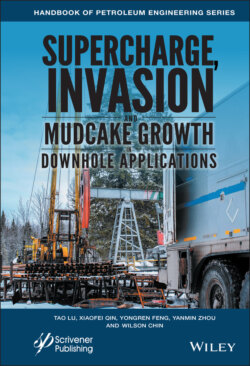Читать книгу Supercharge, Invasion, and Mudcake Growth in Downhole Applications - Группа авторов - Страница 18
1.3 Recent Formation Testing Developments.
ОглавлениеConventional formation tester tools with single and dual probes are shown in Figures 1.8 and 1.9, noting that different testers may be outfitted with different pad designs depending on the application. For instance, small round nozzles may be used with firm matrix rock; in low permeability formations, larger nozzles may be preferable in order to prevent excessive pressure drawdowns that result in the undesired release of dissolved gas or increased mechanical demands. Larger slot nozzles are ideal when formations are lower in permeability or naturally fractured and higher pump rates are desired.
The right-side diagram in Figure 1.6 shows an active pumping “sink probe” mounted on the mandrel, with a passive “horizontal” observation probe located 180° circumferentially away around the borehole. A “vertical probe” is also shown displaced axially from the sink probe and lying along the same azimuth. This conventional 1990s designed “triple probe” tool has seen wide application since its introduction. However, in low mobility formations, questions related to weak pressure signal detection and large diffusion arise.
These have motivated the design of a new and different type of “triple probe” tester, where three independently operated, closer probes are located about the borehole at 120° separations, all residing in the same axial plane and supporting pumping and pressure measurement. Axially displaced “vertical probes” also augment the new triple probe design. The new COSL tool offers advantages over conventional instruments and these are described in a companion 2021 book Formation Testing – Multiprobe Design and Pressure Analysis by Lu, Zhou, Feng, Yang and Chin (John Wiley & Sons). Because of the three-dimensional nature of the physics, the complementary volume develops new analysis and interpretation methods that account for borehole size and shape, and without invoking symmetry assumptions, since the probes may differ during any logging run and pump with different flow rate schedules. Figures 1.20 – 1.22 show example graphics from the book.
Figure 1.20. New triple probe formation tester. Pads with “small round nozzle and slot probe” (top) and “all long slot nozzles” (bottom).
Figure 1.21. New COSL triple probe tester, perspective view.
Figure 1.22. Simulator menu for Probes 3, 7 and 11 (top), sink Probe 7 pressure drop versus kh and kv at fixed rate (bottom).
